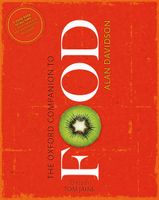Advertisement
Panada
Published 2014
One meaning is a sort of bread gruel or soup, typically made by boiling some bread in water and then adding flavouring. With the addition of lemon, wine, and sugar, it was considered in the 17th century to be highly nourishing for invalids. Hannah glasse (1747) thought so too but disallowed the wine in her version. Such a plain soup was an important fast-day dish for Catholic countries. The second meaning of the term is a paste made with breadcrumbs or any of various flours and water, milk, or stock, to be used for thickening sauces or for binding mixtures, perhaps for quenelles, gnocchi, the panada of Catalonia, or meatballs.


